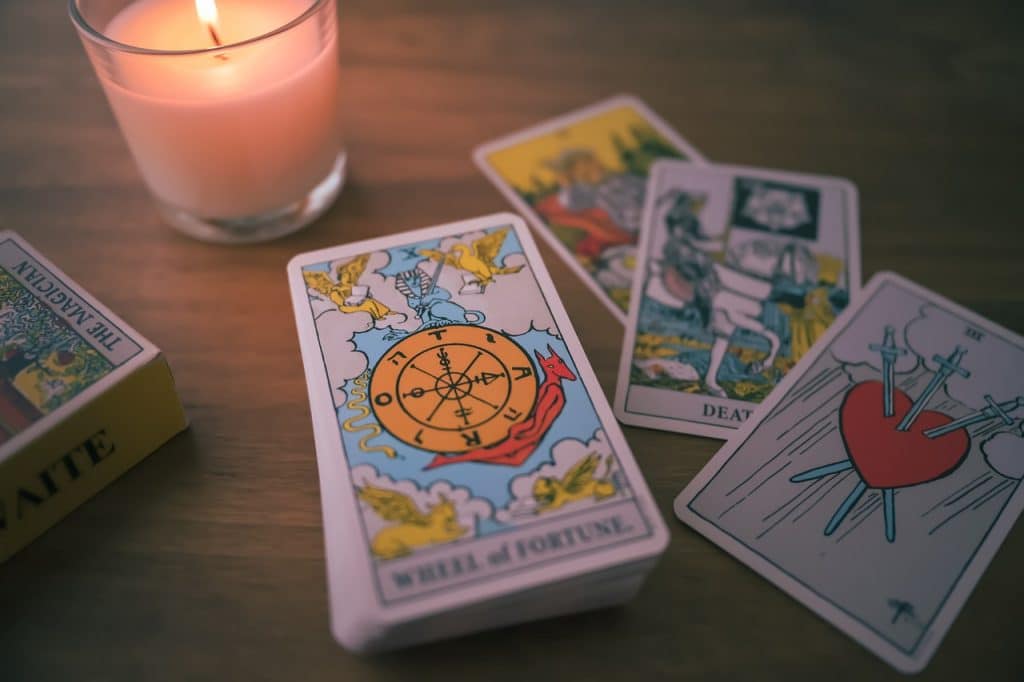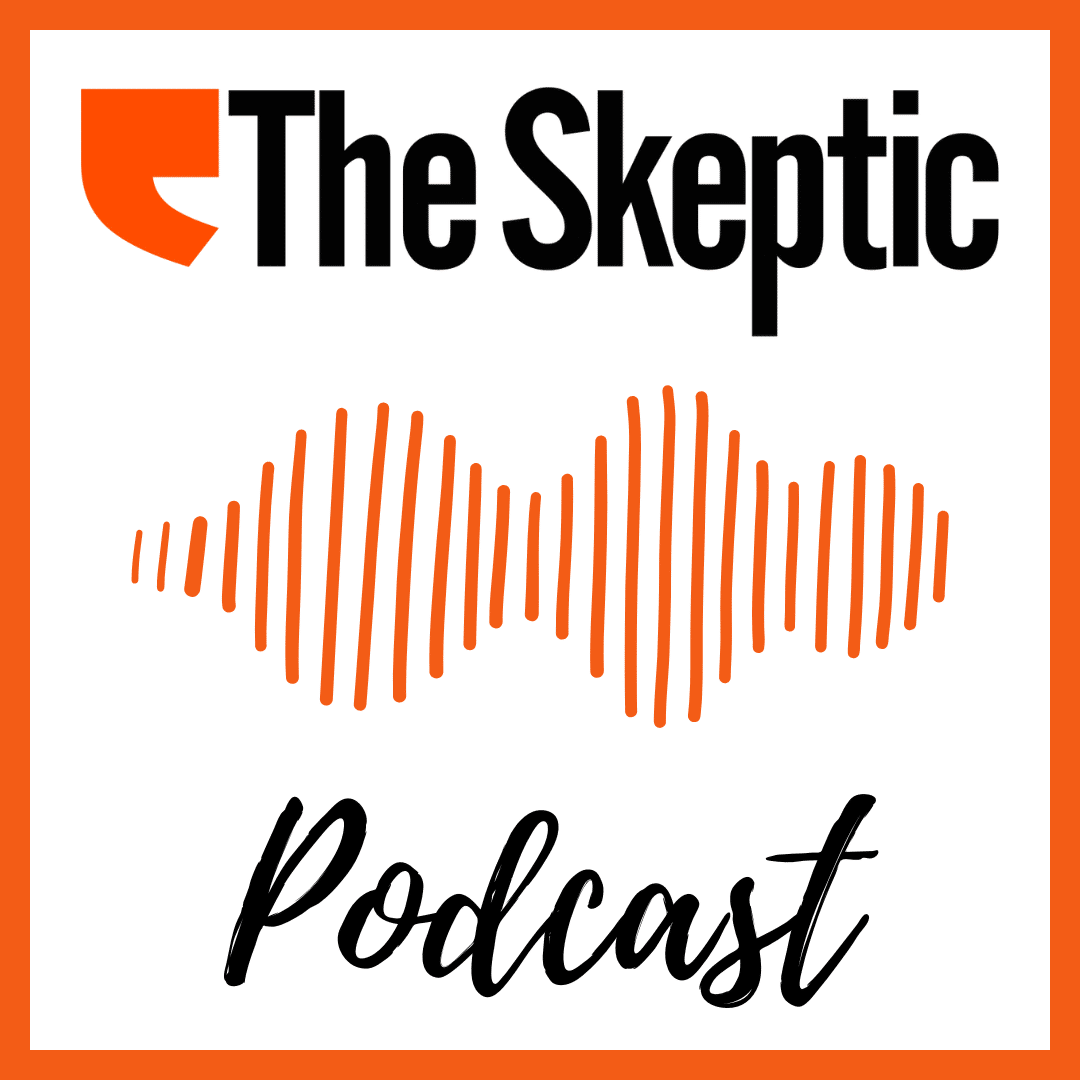This article originally appeared in The Skeptic, Volume 6, Issue 3, from 1992.
For centuries women were oppressed, and their supposed irrationality was one of the excuses. Many women are now taking pride in irrationality as an ancient female power. Is it a substitute for the political power they lack? Or are they compensating for feelings of inferiority by emphasising powers they have always (supposedly) had? Ought we to persecute them for trying to raise their self-esteem?
There’s no such thing as harmless nonsense. To tell the gold from the pinchbeck you have to know how to think. We should at least try and persuade women that irrationality can be dangerous. Its practical consequences can be unfortunate or even deadly. If you dismiss the scientific method as a male conspiracy, you may end up with liver failure after an overdose of comfrey tea.
In her book The Skeptical Feminist (now about ten years old), Janet Radcliffe Richards deplored the fact that some feminists rejected logic and reason on the grounds that men had used them for bad ends. This branch of feminism, instead of withering away, has burgeoned and now seems the most healthy part of the plant. Is this perception correct? Feminist academic Janet Montefiore agreed that feminists still reject reason, ‘but academic feminists put it rather differently. They reject the contamination of so-called masculine rationality.’
In the 18th century Enlightenment, the philosophers said that women were irrational. When academic feminists discard rationality in response to this they are ‘deconstructing the rhetoric’. They think reason has been contaminated by rationalisation, but they don’t use words like that. They’re more likely to say it’s “phallologocentric”. Ten years ago we were discovering our true female nature – “We reason with our bodies, we feel it in our wombs” etc. The academic version of this is “We are de-centred subjects and we have dethroned King Phallus (King Reason)”.
How does this get translated to the woman in the street? There is a popular version of the academics’ polysyllabic arguments (”We don’t want male logic”), but, said Janet Montefiore, it’s not fair to criticise what people say in pubs, as it’s not the same as what they say in academic discourse. She concluded that it was an unresolved argument in feminism.
However, even if feminists claim to have rejected reason, it doesn’t mean they actually have. It’s possible to declare you have rejected reason without knowing what it is. Women may fear its name because men invoke it (this is not the same as using it) as a weapon to keep them in their place. The feminist magazine Spare Rib may put ‘proof’ in quotes, but the decline in the Bristol Cancer Centre’s attendance shows that people do want proof (or ‘proof’), even though the results of the originally unfavourable Bristol study turned out to be inconclusive.
The women’s movement has certainly become less pragmatic. Instead of working on issues such as abortion, day care and equal opportunities, women are worshipping the goddess. Instead of campaigning against unnecessary episiotomies, they are applying Bach flower remedies. According to Freya Aswynn (a Netherlands-born Odinist, former witch, and author of Leaves of Yggdrasil, Runes, Magick, Divination and the Feminine Mysteries) feminism since its 60s incarnation (‘women’s rights and all that’) has developed into ‘lesbian feminism on the one side and the development of worship of the goddess, also a great awareness of the earth, animals, plants, trees on the other.’ Feminism has taken on many of the characteristics of the New Age.

What is the New Age? In the first place, it’s about as new as the New Forest. Superstition has always existed side by side with official religions and learning, adapting to suit the time and the place. All you have to do is change the trappings. Superstition has moved upmarket, shedding its image of elderly ladies with badly dyed hair making a poor living reading tea leaves in a seedy backstreet. Out go the crystal ball and the chenille table cloth with bobbled fringe, in come the Arts and Crafts designed tarot cards and the stripped pine furniture. The New Age has gone for the people with most spare cash and repackaged superstition for the middle classes.
There’s supposed to be something particularly female about all things New Age. The right side of the brain (the ‘good’ side) is associated with ‘feminine’ qualities such as spirituality, intuition and aesthetics. This sounds familiar – isn’t it the little woman whose brain can’t cope with science but can throw together a pleasing colour scheme for her sitting room? The early 70s feminists fought against such stereotyping. According to Freya Aswynn, occultism is divided into separate realms: ‘There are basically two branches, one is the celestial branch, usually tied up with intellectual people who study astrology, or hermeticism, or runes. And then there are the people who work with the earth: herbalism, healing, seasonal energies, festivals. And the two are complementary. And it is in the latter category that you find most feminists. Women are more interested in the earth, which of course is only natural.’
In the past, women were always pegged as the superstitious sex, but it was hard for them to know better because they were barred from education. And some of their ‘superstitions’, such as herbal medicine, may have been quite effective. One shouldn’t throw the baby out with the bathwater, but on the other hand one shouldn’t have to take the chaff along with the wheat. Formerly, magic was one of the few routes to money and power open to women. Why are so many intelligent, well-heeled, educated women turning to it now, when it’s so much easier for women to get their hands on money, power, learning and liberty (though the battle is by no means won)?
We should be worried – it is frightening that what seems to be sheer silliness can acquire a sinister power. An uncritical attitude can result in thralldom to those who take money from the vulnerable in the name of spirituality. Freya Aswynn, though to an outsider she might seem typical of the genre, thought her opinion of many features of New Age was ‘perhaps not printable’. She thought the recent popularity of the occult was due to fashion as well as cynical marketing exercises. She continued: ‘It focuses incredibly much on self-development. It doesn’t actually espouse a philosophy of helping people out and trying to alter social conditions. It’s a heavy ego-trip: “Oh aren’t I wonderful, aren’t I liberated”. Everybody’s really into themselves.’
The Goddess
What is the goddess? Leaving aside the question of how a bodiless entity without genitalia or chromosomes can be either male or female, is the goddess a superstition, a genuine religion, or an enabling metaphor? Or is ‘enabling metaphor’ a respectable term for superstition? ‘It all originates from the human mind, though energy exists ‘out there’ that corresponds,’ said Freya Aswynn. ‘All we do is personalise them into the form of a god or goddess and use that image as a mediator to express ourselves in forms of religion or magic. I know I ought to worship a goddess. There are literally dozens about, but for some peculiar reason Odin it is.’
She said that she didn’t mean ‘worship’ in the Christian sense. ‘We haven’t got that self-abasement. We argue with our gods. We negotiate and drive hard bargains, and we take the piss out of them. It can be a personal idea of a goddess, or god, but it doesn’t have to be. Lots of people are into the earth, or into animal liberation, or healing. Most people believe in a spiritual dimension more in terms of the earth. There are people in the occult world who look to the universe as a spiritual dimension of growth, and then there are those who work with the Gaia principle – the earth is an organism, the great mother from which we come and to which we go.’
Publishers such as Thorsons and Arkana (a Penguin imprint) are flourishing in the present climate. My local bookshop’s health section, as well as a Nurse’s Dictionary and Pears Medical Encyclopedia, contains: The Detox Diet, Food Combining for Health, Beyond Codependency, Smile Therapy, The Silva Mind Control Method of Mental Dynamics, Aromatherapy, Massage, The Family guide to Homeopathy, Norman Vincent Peale’s Art of Positive Living, The Greening of Medicine (foreword by HRH the Prince of Wales), Peace Love and Healing: the Path to Self Healing (‘I wish that someone had told me when I was in medical school that over 50 years ago Carl Jung had interpreted a dream and made a physical diagnosis.’) Under ‘miscellaneous’ can be found The Way of Energy, The Dowser’s Workbook, Natural Magic, James Berlitz (and lsaac Asimov), Fritjof Capra (and James Randi), Carlos Castaneda, Linda Goodman’s Sun Signs, Nostradamus, Lobsang Rampa, and Robert Pirsig.
The shop is owned and run entirely by women, but a spokeswoman denied that it was a feminist outfit, ‘We are fulfilling our brief as a general bookshop. It’s market forces. A lot of our customers are women with children. There’s a large population in the area of, er, literate women.’
Cherry Gilchrist’s The Circle of Nine, published by Arkana, is a description of feminine archetypes. It could be seen as a worthy attempt to counteract centuries of the effect of such as the Catholic Church on women’s self-esteem, but sadly she has accepted old style images of femininity and given them a new respectability. Freya Aswynn, on the other hand, rejects the conventional image: ‘I work with mainly the female archetype of the valkyrie. Christianity has always kept women suppressed, and Islam of course.’ Gilchrist presents what are not so much archetypes as stereotypes. They are like the character descriptions in an astrological handbook, or from one of those articles women’s magazines used to carry about what colours to wear to suit your particular skin type.
Gilchrist’s book is well and entertainingly written – no nasty neologisms like ‘gyn/ecology’. And she’s not entirely uncritical: she describes an astrology workshop run by women that was left to ‘flow’ into chaos while the men administered the creche with military precision. But generally she doesn’t bring evidence or support her assertions (‘The boundaries between “self” and “other” are less marked in the female’), and a critical attitude is lacking.
So why should we want to know about female archetypes? Gilchrist rehearses the Joseph Campbell/Schumacher argument that myths can be created and that you can alter people’s behaviour in socially useful ways by giving them the right kind of myths. This sounds unpleasantly dirigiste – is propaganda acceptable as long as it is good? ‘We have become aware of the need to retrieve symbolic insights into life…’ says Gilchrist. What practical purpose is symbolism? Simone de Beauvoir in The Second Sex said that the trouble with women was that they mistook symbolic gesture for effective action. The Greenham Common women used the word ‘action’ to mean gesture (‘We did an action at Blue Gate’) though they still managed to have an effect.

And if you aspire to be deep and intelligent without too much hard work, metaphors and symbols represent profundity. They make an impressive sound. However, once Gilchrist gets away from ‘the circle is a symbol of receptivity’ there are nuggets of practical information and illuminating insights, again like women’s magazines. In fact, when she says that everything and everybody is beautiful, and even ugliness has a beauty of its own, and that true beauty (as if you hadn’t guessed) can be achieved without fashions and make-up, one cries out ‘Come back, Patience Strong, all is forgiven!’ (The poems of Patience Strong, a women’s magazine staple for many years, aimed to help people – women – accept appalling situations rather than trying to change them.)
Unlike astrology (where the character write-up is chosen for you) you can choose your own archetype from a list including the Queen of Beauty, The Weaving Mother, the Lady of Light, the Queen of the Night, the Great Mother, the Lady of the Hearth, the Lady of the Dance and the Just Mother. I come out as a cross between the Great Weaving Mother and the Queen of the Night (better than being a Metal Rabbit). The Queen, whose attributes are anger, wit, fierceness and cunning, is the only archetype which isn’t paralysingly nice. She has the ability to see through pretence, but unfortunately this is bundled with ‘gifts’ such as clairvoyance and telepathy.
Gilchrist equates handicrafts with astrology, and adds that part of the Weaving Mother’s character is a love of intrigue. (I deny this.) According to Angela Carter women have a private, imprecise language – ‘a bit of cheese, a knob of butter’ – which alienates them from (male) scientific discourse with its language of precise measurements. But when it comes to weaving, woe betide the Weaving Mother if she’s imprecise enough to get one stitch wrong.
What’s dangerous is Gilchrist’s implication that you don’t need to think straight, perform double blind controlled tests, or use your brain to try and understand the world. She moves seamlessly from telling stories around the hearth to divining the future. ‘Where such ability exists, [it] is not solely of the feminine province, but is probably more readily acceptable to women. To be divine requires a willingness to let go of “rational” [her quotes] concepts, and to allow intuition and imagination to be the communicators of information.’ There is no ‘because’ between these two sentences, but she implies that it follows that women are more au fait with divination because they are, not less rational, but more willing to let go of rationality and turn to intuition. But what does ‘intuition’ mean exactly?
Janet Montefiore referred to ‘worthy articles in the Independent‘ which explain women’s intuition in terms of a different style of thought, the ability to listen, and skill at making connections, but ‘intuition’ in Gilchrist’s paragraph refers to magical powers. Freya Aswynn also used the word in this context: ‘I am mainly involved in the intellectual side. However I am intuitive myself in that I can do readings for people.’ There’s a great difference between the two meanings. Magic is said to be irrational, because it’s irrational to believe it, but if there was such a thing as magic it would not be irrational in itself. But since it’s thought to be irrational to believe in it, those who believe in it claim that you have to be deliberately irrational in order to use it. It might be worth sacrificing reason if you gained magic powers as a result. Though if magic existed, it wouldn’t be irrational to believe in it; in fact you wouldn’t need to ‘believe’ it because you’d have enough evidence to know it existed.
Another reason why many women claim irrationality to be a valuable female quality is that they feel that male culture is cold, logical and scientific. Adversarial argument is seen as aggressive (and aggression is bad and unfeminine). Gilchrist refers to ‘cool reason’ and ‘harsh logic’. Female culture on the other hand is seen as warm, nurturing, magical, poetic, sensitive, caring and healing. Sarah Miles was recently quoted in the Independent as saying: ‘Corn circles are giving us an opportunity to rekindle our reverence for the unknown, that in itself is enough.’

‘Men can play with ideas; women become them,’ asserts Gilchrist. She says that women’s reluctance to put forward their beliefs in mixed company is due to a lack of courage: ‘We want to put forward our beliefs only when we are reasonably sure that everyone else will assent to them, or at least pretend to.’ She says that ‘cleverness is a vital feminine weapon’, but she means it’s a vital weapon for getting your own way, not something to be valued for its own sake. The ‘cut and thrust method [of argument] doesn’t suit women well,’ she continues. ‘To men, a verbal battle is enjoyable… to women it is not’ (There’s nothing I like better.) This is the closest she gets to talking about intellectual activity. There is nothing about wanting to find out about things. The three archetypal mothers ‘understand the laws of time and space’, but not in the same way as Einstein. Her images of women don’t include brain surgeons, professors, computer programmers or managing directors.
Despite the overlay of goddess talk in The Circle of Nine, the resemblance to old style women’s magazines is too strong to ignore. The new feminism is depressingly like the old femininity. Superstition was always part of the Woman’s Own weltanschauung. Gilchrist has taken the image lock, stock, barrel, astrology column and knitting patterns into the New Age and hence into middle class respectability. The final impression is of soppiness: the same romanticism and sentimentality that women are fed from My Little Pony to Wordsworth, the vein of tweeness that saps the strength of English society.
Conclusion
I’d like to make several unsupported assertions of my own. In my opinion it’s partly a problem of self-image. The image women have of themselves is affected by the feel-good factor. They pride themselves on being warm, caring, intuitive, spiritual: unlike cold, unloving, logical, material men.
These bundles of qualities are supposed indivisible, and mutually exclusive. Women don’t want to alienate men, or each other, by being ‘aggressive’: being logical and arguing about intellectual subjects. But this is a survival tactic women have got to attract a man (an early 70s feminist would shriek at the suggestion). Women claim spurious answers because they lack real power, and fear competing with men on what’s perceived to be their own ground. Lack of confidence and lack of education lead to alternative methods of boasting, and the adoption of spurious ideas as a substitute for genuine intellectual activity. But logic is not men’s ground, it’s anybody’s. Logic is not a sex-linked characteristic. (Male logic? don’t make me laugh.) Women may think that logic can only be used as a weapon, but it is neutral.
The danger is that the sleep of reason produces monsters. If you can’t (or won’t) think logically you won’t be able to tell the false from the true. You can be duped by astrologers – or dictators. You won’t be able to understand the world you live in, so you won’t be able to control it. Instead of reverencing the unknown we must deal with the known, and the more that’s known the better. (Besides, once the unknown becomes the known, do we stop reverencing it? If something is unknown, how do you know it’s worth ‘reverencing’? What’s so great about reverence anyway?) We need logic to establish the truth. An illogical statement can’t be true, and if it isn’t true it can’t be of any use. ‘The truth shall set you free,’ said Jesus – but then he was a man.



